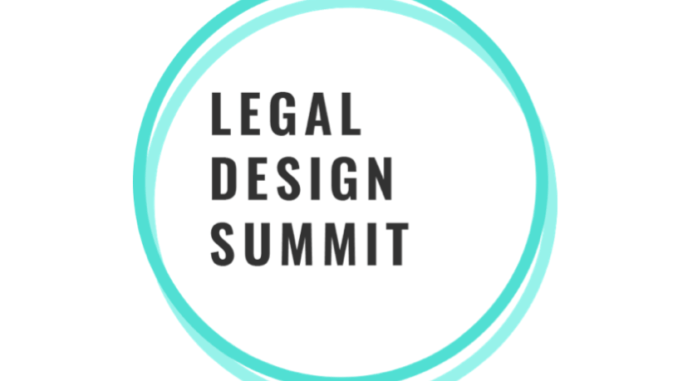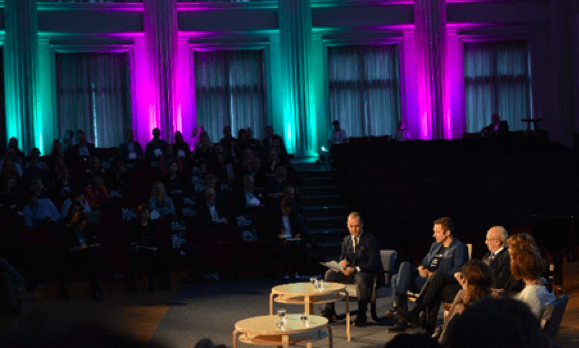
This is a Guest Post about the recent Legal Design Summit by legal engineer, Felix Schulte-Strathaus, from UK-based Wavelength.law.
The Legal Engineer Who Came in From the Cold
Last week, Helsinki hosted the Legal Design Summit. In its second year, the Summit has already become the largest gathering of the legal design community in the world.
Finland in November is cold. Really cold. But my shivering didn’t get much sympathy from the locals who took great pleasure in reminding me that ‘there’s no such thing as bad weather, only inappropriate clothing’.

Perhaps it was the way I’d designed my travel wardrobe that was the problem…, anyway, I was here to take a deep dive into design thinking within a legal context.
The Summit’s marketing strap line was: ‘Today law lacks usability. Legal documents are poorly designed and are inadequate to meet the needs of a modern society.’
The conference was designed across three themes: (i) design beyond visualisation, (ii) innovation and (iii) privacy in the legal design sphere.
The Summit invited guests to attend a number of hands-on events, including the ‘brain factory’ where participants were placed in multi-disciplinary teams over the weekend for an intense brain-storming/devise/reflect-a-thon with mentors and designers onsite. What their case study at the Summit showed was a greater need in the industry to focus on the client’s pain points rather than only the legal issues.
My favourite moment was the speakers’ dinner on the night before the start of the main event. With design in mind, I had the honour of presenting alongside the brilliant Dan Jackson from NuLawLab, who has taken his expertise of theatre design into the legal space.
What struck me most about this pre-Summit event was the energy and lively conversations that were not centred around specific legal tech products, but focused instead on how to improve the experience of ‘users’ in the legal sector.
At the main event there were many excellent presentations, and the two with the content that most resonated with me were:
- The vivid and visual Juuso Koponen from Koponen+Hildén, a Helsinki-based data design studio, who walked us through examples of how visualisations have affected criminal cases. He went on to explain his four-step process for approaching legal design:
- identify the use cases for information design in the trial;
- simplify your presentation, focus on the important;
- look how issues are presented visually in the media, copy their best practices; and
- create design standards.
And,
- The duo of Sarah Van Hecke from Dutch law firm, Houthoff, and the designer Kate Snow, who set out a unique case study into what design for a legal matter can look like. The process starts with important foundation of legal strategy and Sarah’s definition of legal design is a combination of law, design, and behavioural psychology. From these foundations they advocated two building blocks (i) designing the right thing – in order to solve the client’s problems and (ii) designing things right – so that the material is insightful to the viewer and does justice to the complexity of the material. In short: we must be designing to deliver.
Across the event, no single speaker gave a ‘What is legal design’ lecture; and how could they? If one thing is for sure, it’s that between the variety of activities, opinions and use-cases, legal design simply cannot be bolted down.

Essentially, my take is that legal design thinking is about making people’s lives and experiences better, and the legal design summit overwhelmingly based this on a handful of key principles: (i) focus on the user (i.e. identify the user and focus on their needs), (ii) experiment (challenge the status quo), (iii) be intentional (understand organisational culture and values and align your actions to these).
As a legal engineer, before this event I probably didn’t appreciate how heavily I rely on legal design to do my job. A lot of what I do is about making things that are useful, usable and engaging. As well as building and configuring efficient processes with creative solutions planned with a lot of user-engagement and fast iterations.
I now firmly believe that the success of NewLaw innovation depends on the application of the principles behind the various expressions of ‘legal design’, otherwise we’re not solving the problem, we’re just giving it a new coat of paint.
So, from a chilly November in Helsinki the warmth of the global legal design community and some red hot legal design thinking really brought me in from the cold.